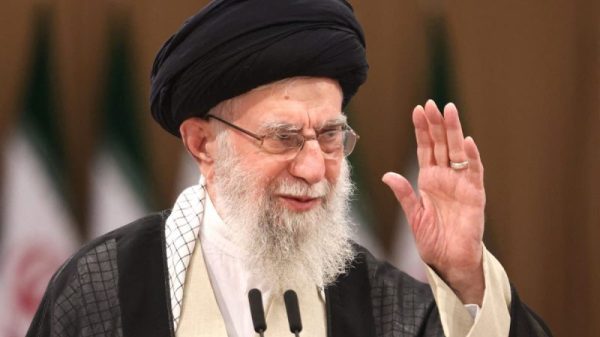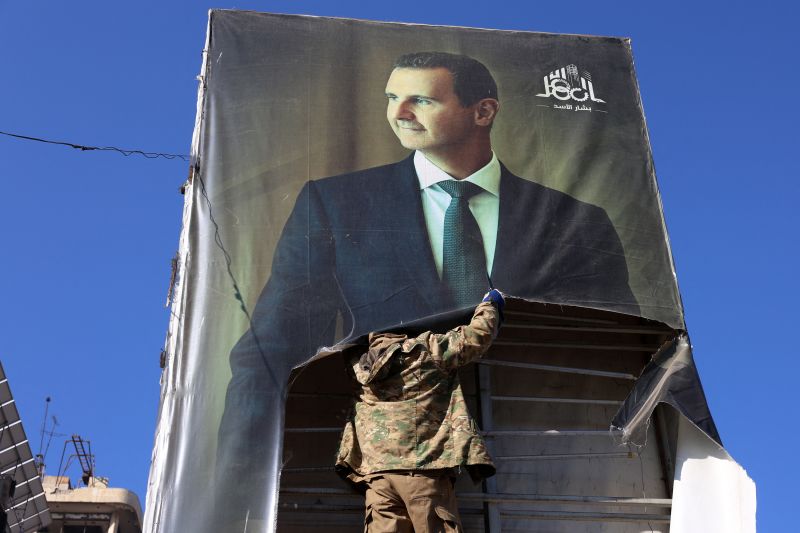“Our leader forever” was a slogan one often saw in Syria during the era of President Hafez al-Assad, father of today’s Syrian president.
The prospect that the dour, stern Syrian leader would live forever was a source of dark humor for many of my Syrian friends when I lived and worked in Aleppo in the late 1980s and early 1990s.
Hafez al-Assad died in June 2000. He wasn’t immortal after all.
His regime, however, lives on under the leadership of his son Bashar al-Assad.
There were moments when the Bashar regime’s survival looked in doubt. When the so-called Arab Spring rolled across the region in 2011, toppling autocrats in Tunisia, Egypt and Libya, and mass protests broke out in Yemen, Bahrain and Syria, some began to write epitaphs for the Assad dynasty.
But Syria’s allies – Iran, Lebanon’s Hezbollah and Russia – came to the rescue. For the past few years the struggle in Syria between a corrupt, brutal regime in Damascus and a divided, often extreme opposition seemed frozen in place.
Once shunned by his fellow Arab autocrats, Bashar al-Assad was gradually regaining the dubious respectability Arab regimes afford one another.
Was the nightmare of the Syrian civil war coming to an end? Had Bashar al-Assad won? Certainly, that was the assumption of many, despite that fact that large parts of Syria were controlled by a US-backed Kurdish militia and Turkish-supported Sunni factions; that Hezbollah, Iran and Russia propped up the regime; that the US controlled areas in eastern Syria; that Israel conducted air strikes whenever and wherever it saw fit; and that ISIS, though defeated, still managed to launch hit-and-run attacks.
That the government in Damascus was still standing after all that seemed an accomplishment in itself.
Yet it was an illusion of regime victory, suddenly shattered this week after the opposition, led by the once al-Qaeda affiliated Jabhat al-Nusra – rebranded as Hay’at Tahrir al-Sham – launched an offensive out of Idlib province and in just 72 hours managed to storm all the way to the center of Aleppo.
By Saturday evening, Syrian accounts on social media were buzzing about government forces collapsing across the northern part of the country, with rebels advancing on the central city of Hama. It was there, in early 1982, that Bashar’s father had his army and intelligence services slaughter thousands of his opponents, ending an uprising led by the Muslim Brotherhood.
Why, in the span of just a few days, has the dam broken?
The obvious explanation is that Syria’s key allies – Russia, Iran, and Hezbollah – are all under pressure and let their guard down.
Hezbollah – which played a key role in bolstering the regime during the darkest days of the civil war – pulled most of its troops back home after October 7, 2023, to fight Israel, which has subsequently killed most of the group’s senior leadership.
Russia also played a key role in shoring up the government in Damascus after it dispatched troops and warplanes to Syria in September 2015. Yet now Moscow’s top priority is the war in Ukraine. And, finally, Iran’s advisers and bases in Syria have been under frequent attack by Israel over the last year.
Beyond all this, there is the basic reality of longevity. The Assad dynasty has been in power for 53 years, since 1971. While its mere survival is an accomplishment, it has little else to show for it.
Endemic corruption and mismanagement were a burden on the economy even before the civil war broke out in 2011. Since then, life for the average Syrian has gone from bad to worse. The war has left hundreds of thousands dead, while millions more have been either internally displaced for driven into exile.
Time and time again since 1971 the Assad dynasty has survived internal and external challenges and lived to fight another day. Yet nothing, not regimes, not leaders, lasts forever. Everything eventually comes to an end.







































